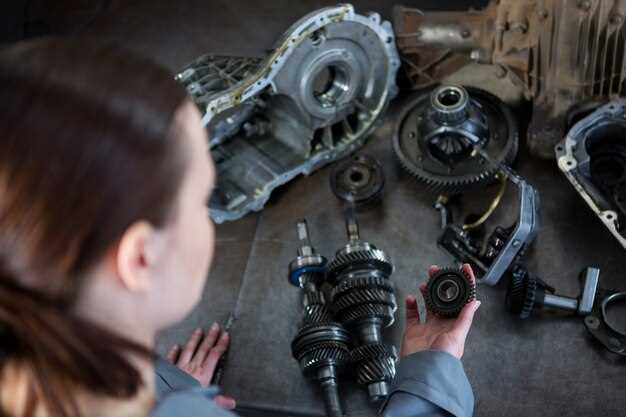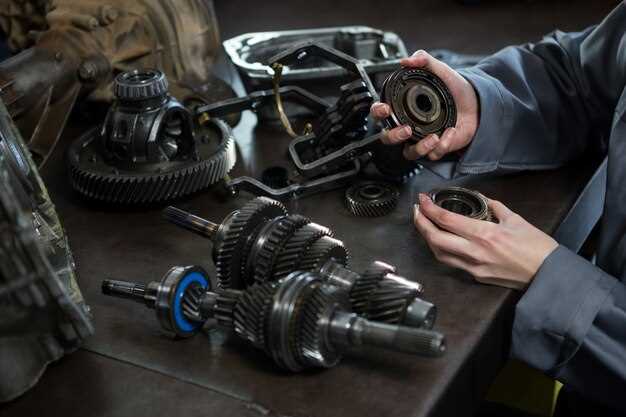
The crankshaft and bearings are vital components of any internal combustion engine, playing crucial roles in the conversion of linear motion into rotational power. Over time, wear and tear on these components can result in significant performance degradation, leading to costly repairs and reduced engine longevity. Recognizing the early signs of crankshaft and bearing wear is essential for any vehicle owner or mechanic to ensure optimal engine performance and reliability.
One of the most common indicators of wear is an unusual noise originating from the engine bay. This can include knocking or tapping sounds that signal insufficient lubrication or damage to the bearings. If left unaddressed, these sounds may escalate, resulting in catastrophic failure of the engine. Regular engine oil changes and monitoring oil levels are crucial steps in preventing such issues, as they help maintain optimal lubrication and prevent excessive wear.
Another critical symptom to watch for is an increase in vibration or rough idling. A worn crankshaft or bearing can lead to imbalances within the engine, causing it to run less smoothly. Additionally, decreases in engine performance, such as reduced power, poor acceleration, and decreased fuel efficiency, are tell-tale signs of underlying problems. By understanding and identifying these symptoms early on, vehicle owners can take proactive measures to rectify issues before they lead to more significant damage or costly repairs.
Identifying Unusual Noises as Indicators of Crankshaft Issues
Unusual noises from an engine can serve as critical indicators of crankshaft problems. Mechanics often describe these sounds as knocking, tapping, or grinding, each of which may signal different types of damage or wear.
A knocking noise, particularly when the engine is under load, may suggest that the bearings supporting the crankshaft are worn or damaged. This can result in insufficient clearance between the crankshaft and the bearings, leading to increased impact noise as the crankshaft shifts during operation.
Tapping sounds, especially when they increase with engine speed, could indicate a misaligned or excessively worn crankshaft. If the alignment is off, the crankshaft may not rotate smoothly, generating rhythmic tapping that echoes throughout the engine block.
Grinding noises are often more severe and can signal serious internal damage. This can occur if metal components are degrading and coming into contact due to significant crankshaft wear. In this case, the integrity of the crankshaft is compromised, which may lead to catastrophic engine failure if not addressed promptly.
Additionally, fluctuating noises during idle may indicate that the crankshaft is experiencing irregular movement, possibly due to failing engine mounts or internal wear. These fluctuations can affect engine performance and should be investigated immediately.
Early identification of these unusual noises can be crucial in preventing extensive damage. Regular maintenance checks and listening for changes in engine sounds are vital practices for vehicle owners. If any unusual sounds are detected, consulting a professional mechanic for a thorough diagnosis is essential to avoid further complications.
Assessing Engine Vibrations and Their Relationship to Bearing Wear

Engine vibrations are a critical indicator of overall engine health and can provide valuable insights into the condition of the crankshaft and bearings. Monitoring these vibrations helps in identifying potential wear patterns and operational issues before they escalate into serious failures.
Vibrations in an engine can be quantified by analyzing frequency, amplitude, and duration. A balanced engine typically exhibits minimal vibrations. When bearings experience wear, they may fail to maintain proper clearance, leading to increased friction and misalignment. This causes abnormal vibration patterns, which can be detected through specialized sensors and diagnostic equipment.
One of the key signs of bearing wear is the emergence of high-frequency vibrations. As bearing surfaces degrade, they produce a characteristic frequency output that can be measured using vibration analysis techniques. The presence of these higher frequencies often correlates with reduced bearing effectiveness, which can lead to catastrophic engine damage if not addressed promptly.
In addition, sustained elevated vibration levels can indicate inadequate lubrication or contamination within the oil system. Lack of proper lubrication exacerbates wear, leading to metal-to-metal contact within the bearings and crankshaft. Monitoring oil condition and ensuring it remains free from debris is crucial for preventing abnormal vibrations and extending engine life.
Regular use of vibration analysis not only aids in detecting wear but also facilitates predictive maintenance strategies. By establishing a baseline of normal vibration levels and continuously monitoring deviations from this baseline, engine operators can implement corrective actions proactively, thereby minimizing downtime and repair costs.
In summary, evaluating engine vibrations is a fundamental practice for assessing bearing wear. Consistent monitoring allows for early detection of potential issues, ensuring that maintenance interventions can be implemented before severe engine failure occurs. This proactive approach ultimately enhances engine performance and reliability.
Monitoring Oil Pressure and Temperature Changes in Relation to Crankshaft Health

Regular monitoring of oil pressure and temperature is crucial for assessing the health of the crankshaft and the overall engine performance. Variations in these parameters can indicate potential issues before they escalate into catastrophic failures.
Changes in oil pressure can signify problems such as:
- Worn Bearings: Low oil pressure may suggest that the main or rod bearings are worn out, resulting in inadequate lubrication.
- Oil Leaks: Unexpected drops in oil pressure can be attributed to leaks in the oil system, leading to insufficient lubrication of the crankshaft.
- Clogged Oil Filter: An obstructed filter can restrict oil flow, causing pressure to drop and potentially damaging engine components.
- Oil Pump Failure: A failing oil pump may not generate sufficient pressure, directly impacting crankshaft lubrication.
Monitoring oil temperature is equally important, as elevated temperatures can indicate:
- Insufficient Lubrication: High temperatures often result from inadequate oil flow, which can lead to increased friction and wear on the crankshaft.
- Overworked Engine: If the engine is under excessive load, it may cause the oil to overheat, risking damage to the crankshaft bearings.
- Contaminated Oil: Oil that has degraded or been contaminated can lose its viscosity, leading to higher operating temperatures and potential crankshaft wear.
To effectively monitor oil pressure and temperature, it is essential to:
- Regularly check the engine dashboard for warning lights that indicate oil pressure drops or high temperature.
- Install an aftermarket oil pressure gauge for more precise readings.
- Conduct routine oil changes and maintenance to ensure optimal oil quality and system efficiency.
- Use high-quality oil that meets the manufacturer’s specifications to reduce wear and maintain performance.
In conclusion, monitoring oil pressure and temperature is a vital part of maintaining crankshaft health. By paying close attention to these metrics, potential issues can be identified early, reducing the risk of catastrophic engine failure.

